Trees Birds Mammals Fish Amphibians Reptiles
Wild Algarve
Bookshop
Clavulinopsis corniculata (Fr.) Corner - Meadow Coral
Phylum: Basidiomycota - Class: Agaricomycetes - Order: Agaricales - Family: Clavariaceae
Distribution - Taxonomic History - Etymology - Identification - Culinary Notes - Reference Sources
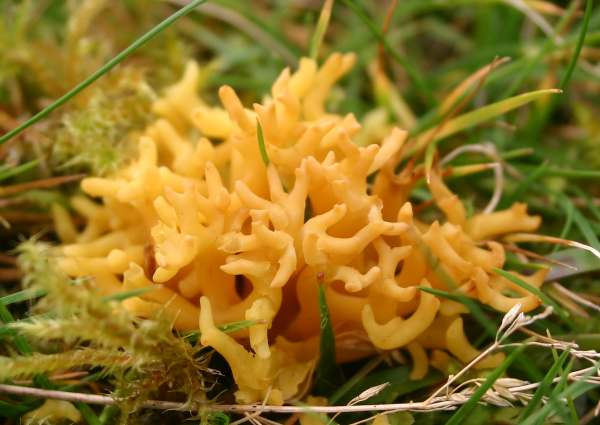
This coral fungus is common in unimproved grassland, including old lawns. Because it also occurs in woodland clearings, there is a chance of confusion with Yellow Stagshorn, Calocera viscosa; however, the latter is a rubbery fungus that grows on conifer stumps, whereas Meadow Coral is brittle, grows among grass and emerges from the soil. In long grass the fruitbody is often tall and sparsely branching, whereas in close-cropped turf, such as that shown here, it is nearly always much more coral like.
In the CHEG scoring system for assessing grassland quality from a mycological point of view, this is one of the clavarioid species that make up the 'C' score.
Distribution
Although locally it may be common, Meadow Coral is an infrequent find in most parts of mainland Britain and Ireland, as indeed it is in many other parts of northern Europe, because unimproved grassland habitats are now so scarce. Clavulinopsis corniculata seems to be much rarer in the warmer countries of southern Europe. This species is also recorded in North America and in many other temperate parts of the world.
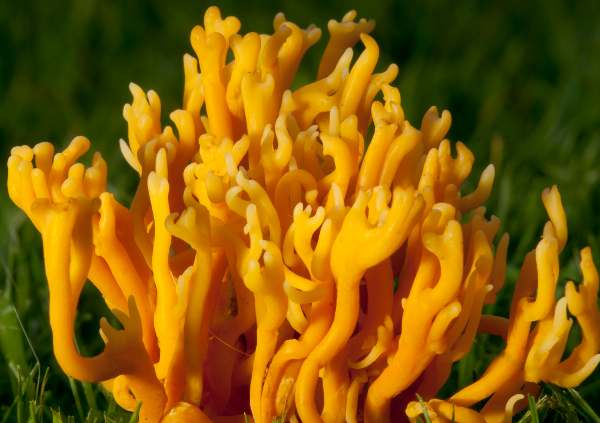
Taxonomic history
Although Carl Linnaeus had earlier described this species, its first valid name, Clavaria corniculata, dates from 1821, when Swedish mycologist Elias Magnus Fries described this coral fungus in his Systema Mycologicum. It was more than a century later, in 1955, that British mycologist Edred John Henry Corner (1906 - 1996) transferred this species to the genus Clavulinopsis, at which point its currently accepted scientific name Clavulinopsis corniculata was created.
Synonyms of Clavulinopsis corniculata include Clavaria fastigiata L., Clavaria corniculata Fr., Ramaria corniculata (Fr.) Gray, Ramaria pratensis Gray, and Clavulinopsis corniculata f. bispora Corner ex Pilát.
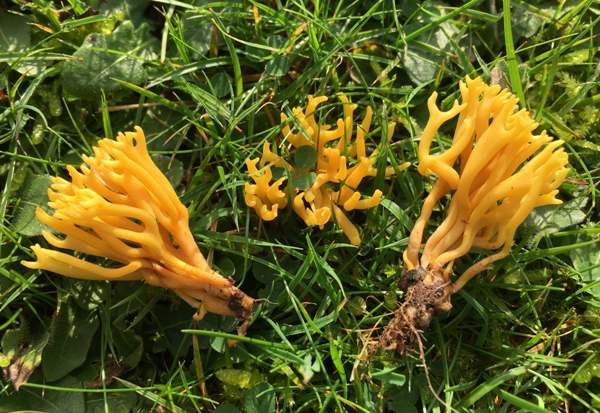
Etymology
The origin of the generic name is the Latin noun clava meaning a club, with the suffix implying that it looks quite similar to species in the genus Clavulina. The Clavulinopsis genus is closely related to Clavulina and Clavaria, but fungi in the Clavulinopsis group have tougher, less brittle fruitbodies that are solid rather than hollow in structure. The most obvious microscopic difference is that Clavulinopsis species have clamp-connections in the tramal tissues.
The specific epithet corniculata also comes from Latin and is a reference to horns, in this case in the form of branching antlers.
Identification guide
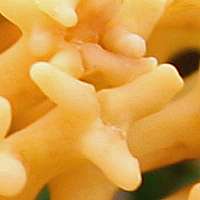 |
Fruitbody
Branching stems arising from a common thickened base; stems usually branch dichotomously, each branch eventually terminating in two (very occasionally three or more) blunt tips; yellow, maturing ochre or tan-brown; base paler and downy.
The individual stems are
typically 4 to 8cm tall. |
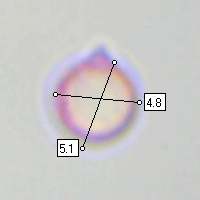 |
Spores
Spherical or very nearly so, 4-7µm in diameter; smooth, with a prominent apiculus.
Spore print
White. |
Odour/taste |
Not distinctive. |
Habitat & Ecological role |
Saprobic, on soil in unimproved grassland; very occasionally in deciduous woodland. |
Season |
June to November in Britain and Ireland. |
Similar species |
Clavulinopsis fusiformis is golden yellow and also appears in unimproved grassland, but it branches only very occasionally and then always near its much more pointed tips.
Calocera viscosa, Yellow Stagshorn, is a wood-rotting woodland fungus with viscid, rubbery antler-like fruitbodies. |
Culinary Notes
Although reportedly edible (but far from incredible!), this is such a scarce and diminutive grassland fungus that it is certainly not worth trying to collect it to make a meal.
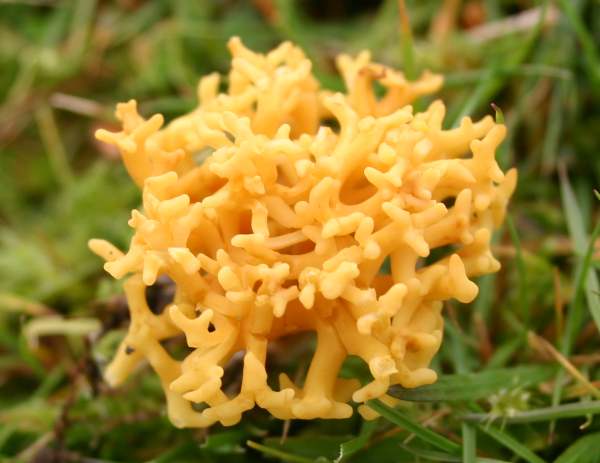
Reference Sources
Fascinated by Fungi, 2nd Edition, Pat O'Reilly 2016, reprinted by Coch-y-bonddu Books in 2022.
Dictionary of the Fungi; Paul M. Kirk, Paul F. Cannon, David W. Minter and J. A. Stalpers; CABI, 2008
Taxonomic history and synonym information on these pages is drawn from many sources but in particular from the British Mycological Society's GB Checklist of Fungi.
Acknowledgements
This page includes pictures kindly contributed by Simon Harding and David Kelly.
Top of page...
Fascinated by Fungi. Back by popular demand, Pat O'Reilly's best-selling 450-page hardback book is available now. The latest second edition was republished with a sparkling new cover design in September 2022 by Coch-y-Bonddu Books. Full details and copies are available from the publisher's online bookshop...